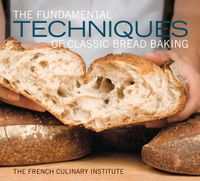Advertisement
Other Flours
Appears in
Although we are most familiar with wheat flour, flour can be made from many, many different foods. Legumes such as soybeans and acorns, ancient grains such as teff and amaranth, and potatoes and other tubers are but a few ingredients used to make flour around the world. In contemporary bread making, many of these once-unfamiliar grains and seeds (particularly amaranth, millet, and quinoa) are now used to add depth of flavor and nutrition to breads made with wheat flour.
One of the most important non-wheat flours in artisanal bread making is rye flour, a low-gluten flour ground from rye, a cereal grass substantially hardier than wheat, that thrives in a cold, wet climate. Since it does not form gluten like wheat flour (it does contain gluten-forming proteins, but not in sufficient quantities) and contains less starch and strengthening protein than wheat, it is usually mixed with a high-protein flour. On the other hand, rye flour contains more soluble sugar, more water-binding semi-liquid substances, more starch-digesting enzymes (alpha-amylases), more minerals, bran, and fiber than wheat flour. Due to its low gluten content, a rye-based dough will retain less gas than one made primarily of wheat, so it should be mixed and handled gently to preserve any intrinsic air in the dough. Rye dough also ferments faster than wheat dough and therefore has a lower fermentation tolerance, meaning it cannot support as long a fermentation period. The enzyme content of rye flour can impact its baking if it is not properly managed. Available in a variety of styles (light, medium, and dark, as well as coarse pumpernickel), rye flour easily absorbs moisture, so breads made with a high proportion of rye flour generally have a long shelf life.

